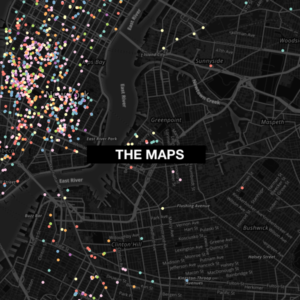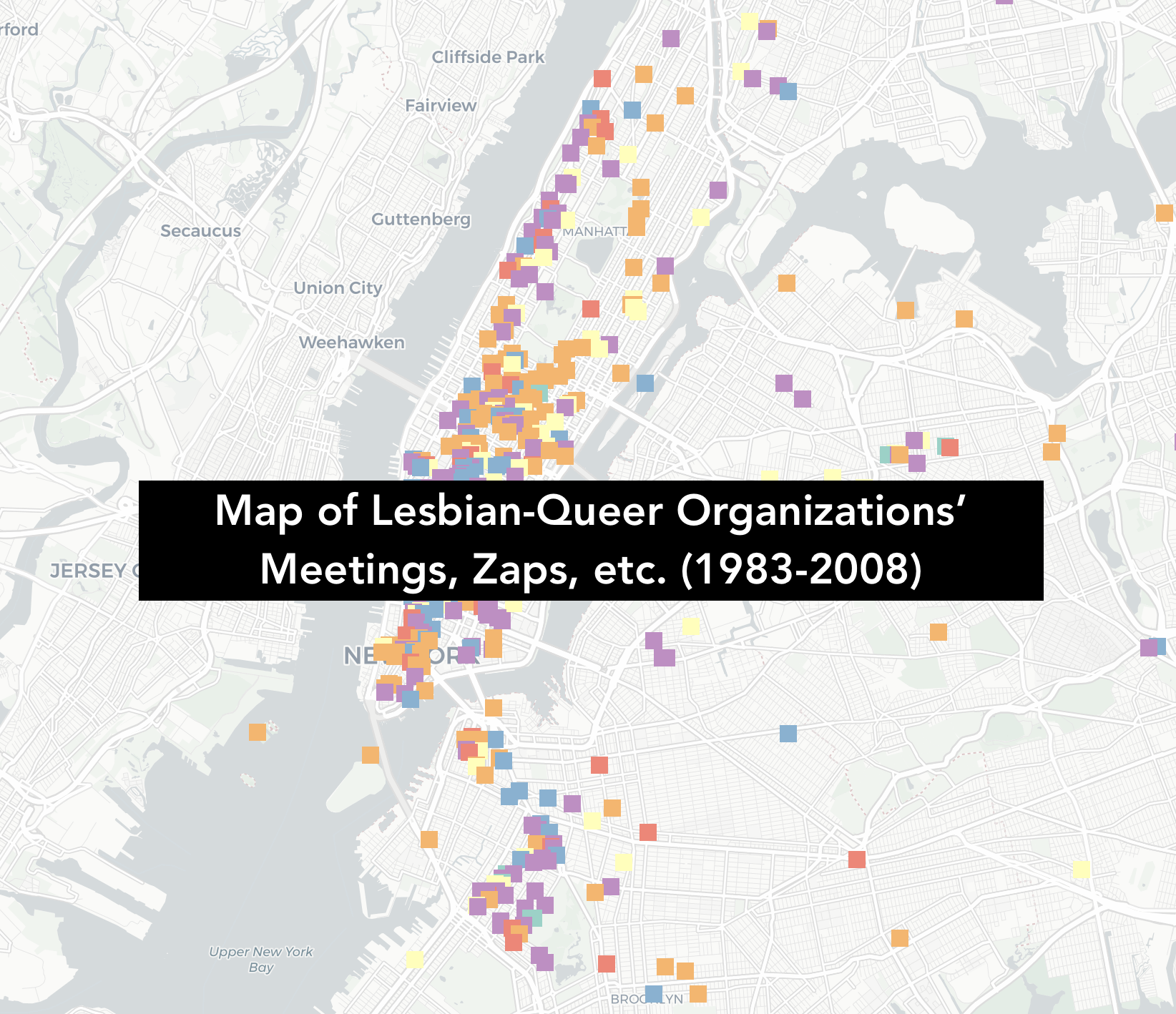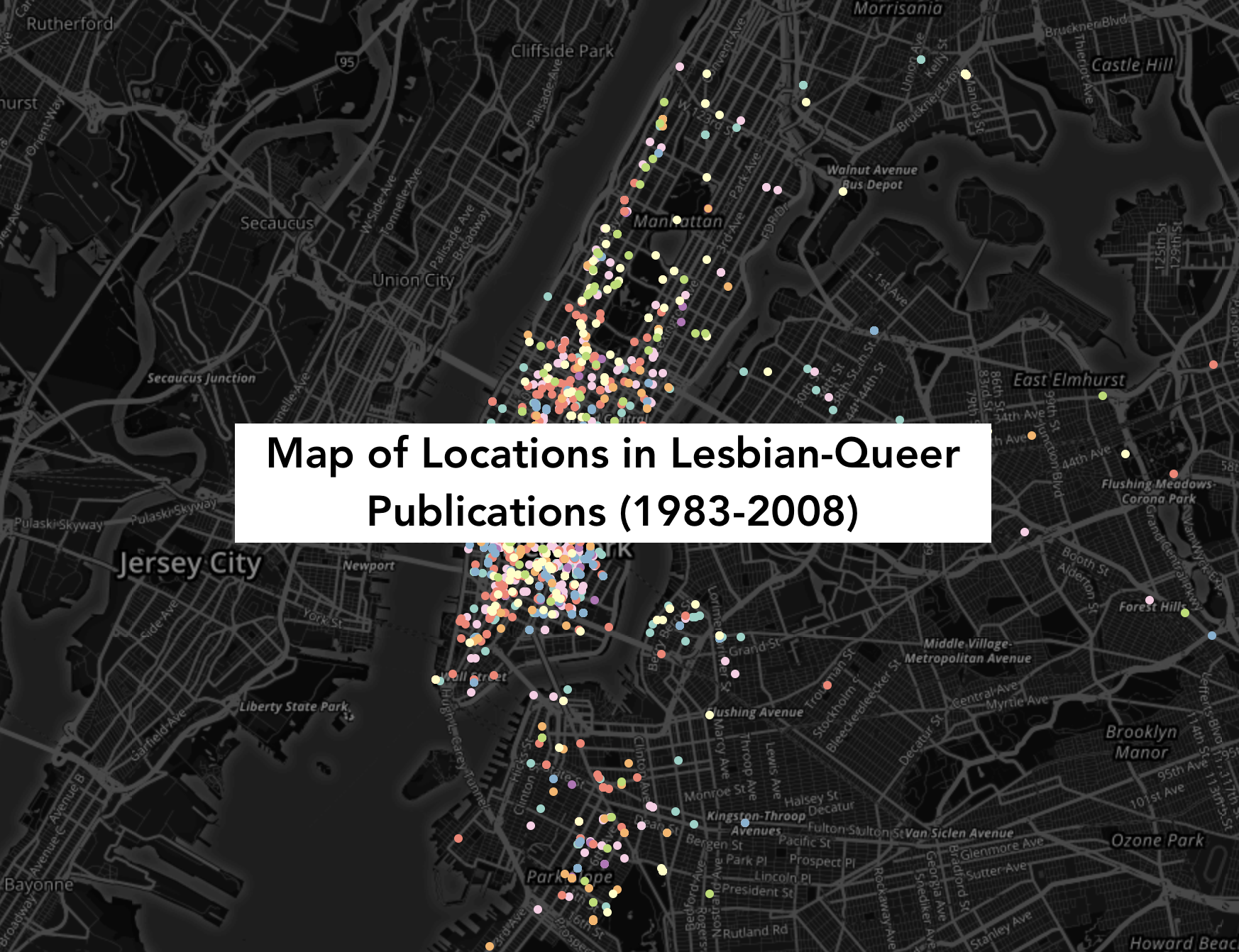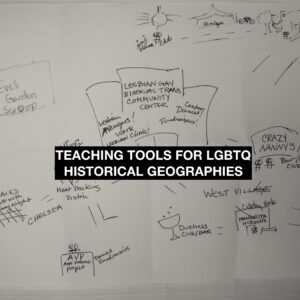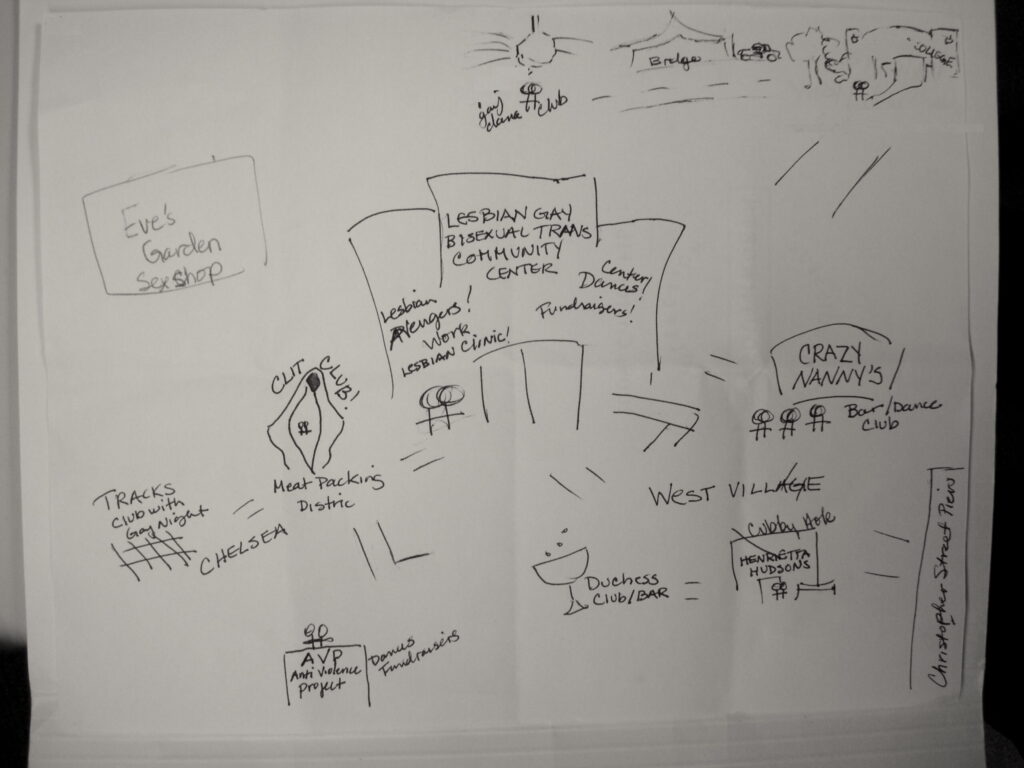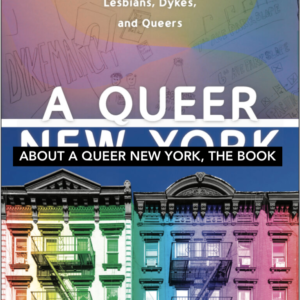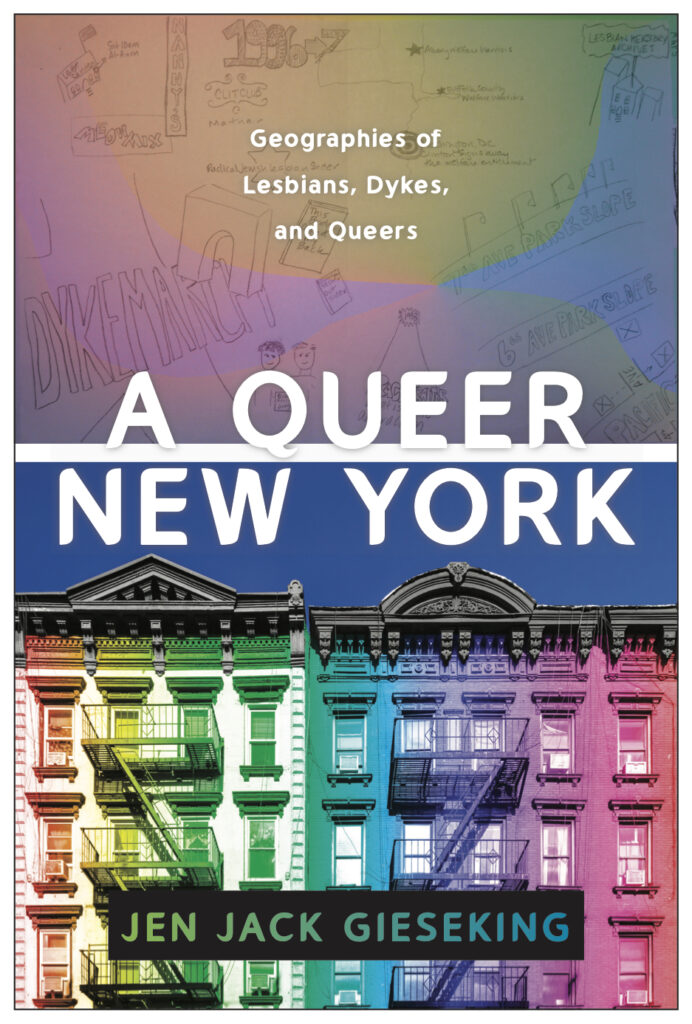For a quick introduction on how to use these maps, check out the video on the Teaching & Research Tools for AEQNY page.
No one map will ever fully render queer history visible, let alone with a dozen or hundred or even a thousand maps. Our lives are too complex and dynamic to render to fixed points and lines, and assume all is revealed.
The project of mapping queer history then affords a radical way of seeing versions of our lives and pasts, to think in broader and deeper, distinct and more refined way about how gender, sexuality, race, class, ability, citizenship, and so on shape our lives. I offer two maps of LGBTQ history in New York City that show the diversity of queer life in the city.
Drawing on archival research I conducted at the Lesbian Herstory Archives (LHA) in Brooklyn, New York, I created . The LHA houses few collections that record the space and time of meetings, often as a way of offering protection and anonymity. For that reason, I am only (yet?) able to map the places listed in publications and LGBTQ organizations spanning my period of research from 1983 to 2008.
